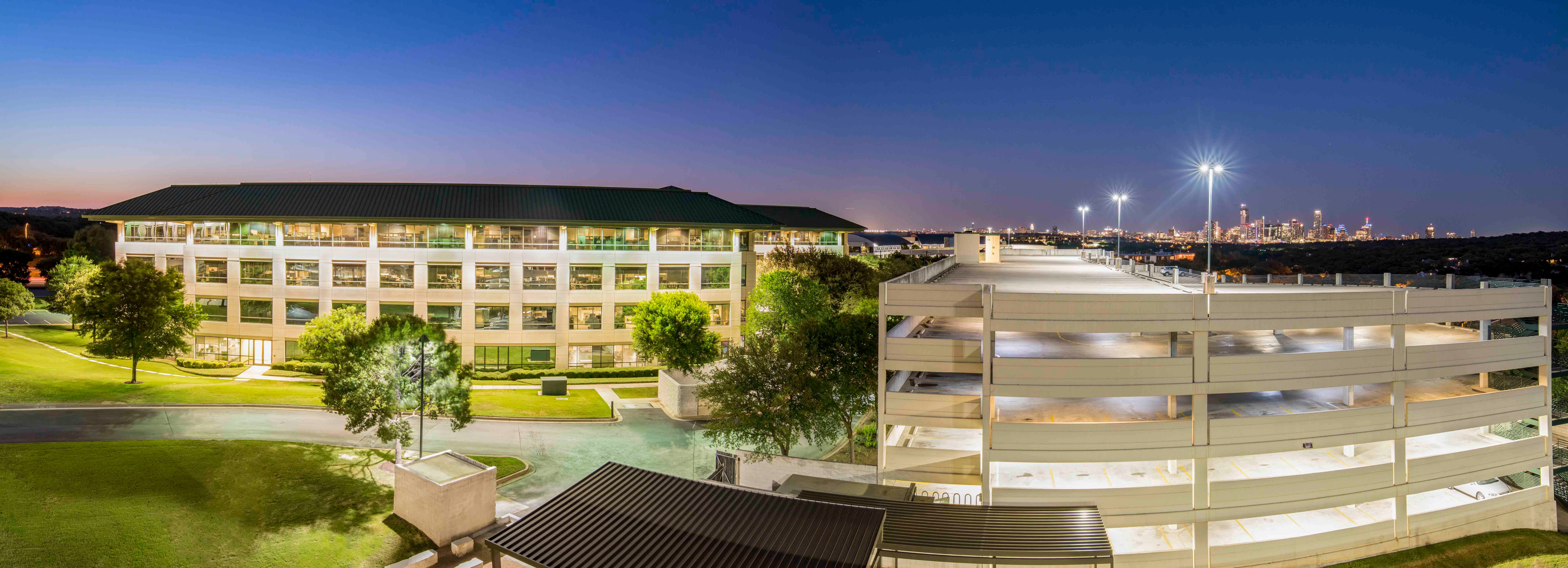KYLE, TX—Kyle officials have made a concerted effort in recent years to diversify the tax base and bring jobs to the city. As part of that effort to attract jobs and stimulate the economy, the city and Hays County focused on providing economic incentives for Majestic to build speculative facilities in the Kyle Crossing Business Park, GlobeSt.com learns.
That effort seems to be paying off. Amazon recently leased a new 307,840-square-foot facility in the Kyle Crossing Business Park where it plans to open a sortation center later this year employing more than 200 workers.
Developed and owned by Majestic Realty Co., the 40-acre business park is one block west of Interstate 35 in the mixed-use master-planned community of Plum Creek–located roughly 20 miles south of downtown Austin. Majestic broke ground on Kyle Crossing in late 2018.
"Demand for high-quality industrial space has surged along with online sales in the first half of this year," said Brian Masterman, Majestic senior vice president. "Kyle Crossing offers brand new facilities in a highly accessible location that is perfectly situated to serve two of the nation's fastest growing metro areas."
Located between Austin and San Antonio, Kyle is one of the fastest growing cities in Texas. While it was once primarily a bedroom community, it is now a city of more than 50,000 residents.
"More and more businesses are discovering that Kyle has everything they need from a great workforce and schools to affordable living options for their workers," said Travis Mitchell, Kyle mayor.
For example, South Korea-based ENF Technology broke ground on a $45 million US headquarters in Plum Creek earlier this year. With less than half of the land developed to date, Plum Creek features more than 2,500 single-family homes, 1,800 multifamily homes and a 100-acre Austin Community College campus. A mixed-use town center, future housing of all types and more than 8 million square feet of commercial development are planned.
"These new deals, especially ENF, prove that the corridor between San Antonio and Austin has come into its own," Masterman tells GlobeSt.com. "After what seems like years of promotion as the innovation corridor, Plum Creek and Kyle are executing on this vision. The North Austin/Georgetown area is becoming too pricey for many tech companies with assembly/manufacturing needs, so MRC feels the I-35 corridor south of Austin is the likely beneficiary with headquarters going north, and the nuts and bolts work going south."
The first homes were built in Plum Creek in 1999. The community was always intended to provide a live-work-play balance of residential and commercial development but remained primarily residential for many years. Momark Development began managing Plum Creek in 2015 and has been successful in luring more commercial development, GlobeSt.com learns.
"Commercial development in Plum Creek is accelerating at the same time that we're adding more diverse housing, services and amenities," said Terry Mitchell, the Momark principal who oversees development at Plum Creek. "The community has matured and now offers a true live-work-play environment that is attainably priced and appealing to companies and their employees."
Amazon is the latest example of this success in turning Plum Creek into a major employment center connected to a residential area with a variety of housing and amenities.
"The unique proximity of Kyle and the region is between two of the largest metro areas in the country," Mitchell tells GlobeSt.com. "Together, these metro areas are larger than the San Francisco-Oakland-Berkeley metro area. Businesses recognize this and now are locating here to serve the entire two metro area regions. It is closer from Plum Creek to Selma, a suburb north of San Antonio within 43 miles, than it is from Plum Creek to Leander north of Austin which is 47 miles."
Most properties absorbed by Amazon in the next few years will be in California, Florida and Texas, placing many of the metros in these states as short-term beneficiaries of e-commerce demand, according to CoStar. Southern and western markets such as Dallas-Fort Worth, Austin, Atlanta, San Antonio, Inland Empire, Tampa and Denver should continue to garner e-commerce space demand as these markets have significant and growing e-commerce buying power.
© Touchpoint Markets, All Rights Reserved. Request academic re-use from www.copyright.com. All other uses, submit a request to [email protected]. For more inforrmation visit Asset & Logo Licensing.







